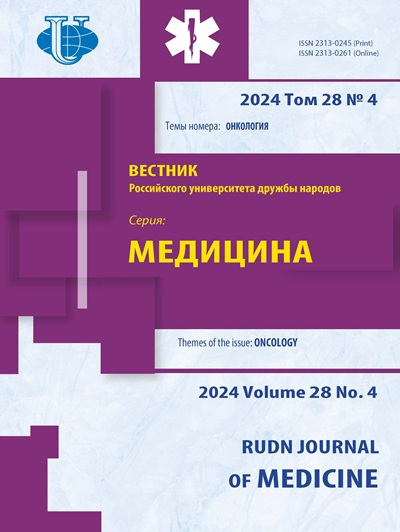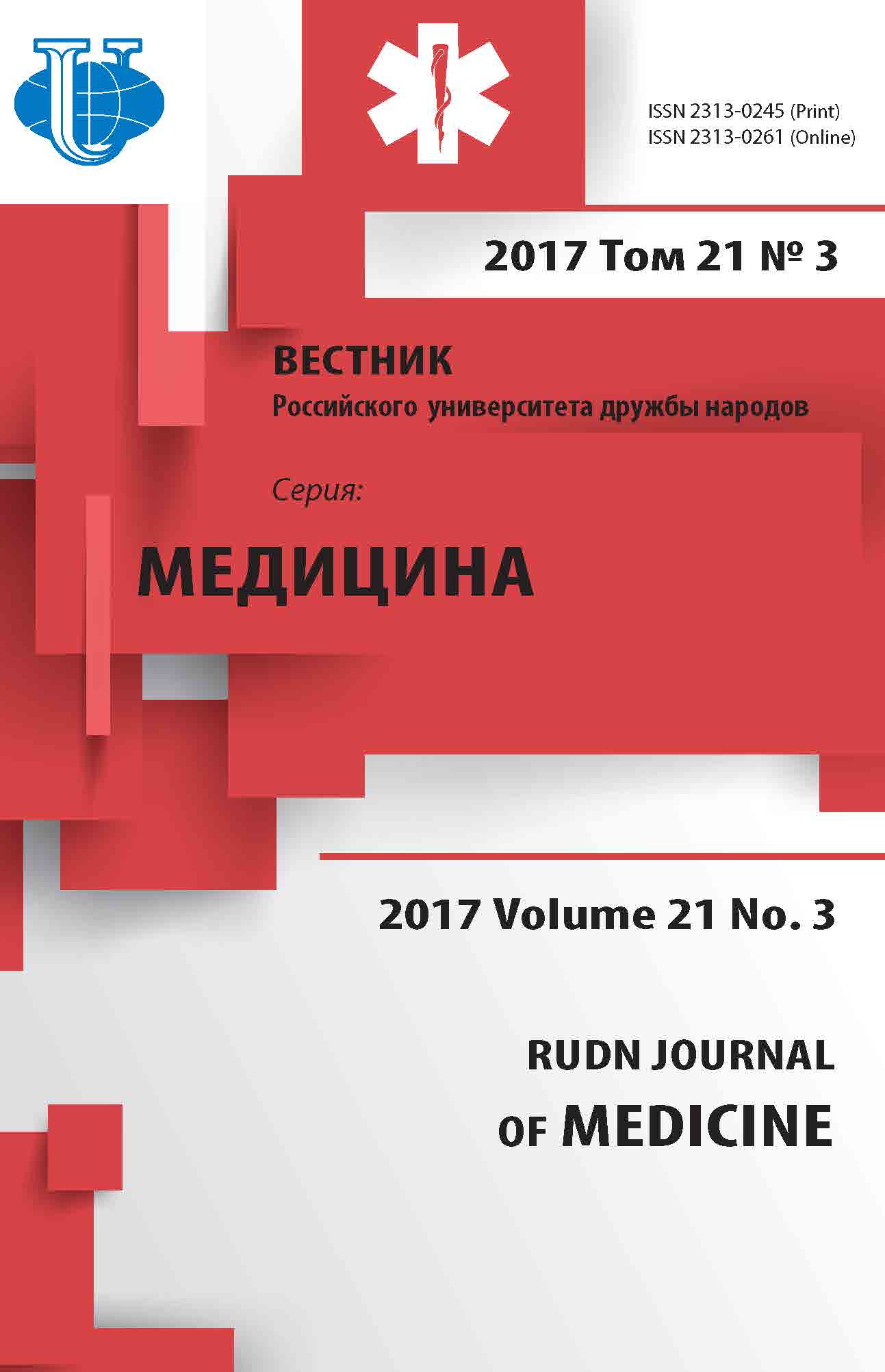ОСОБЕННОСТИ ФИЗИКО/БИОХИМИЧЕСКИХ СВОЙСТВ РОТОВОЙ ЖИДКОСТИ У ДЕТЕЙ С КАРИЕСОМ ЗУБОВ НА ФОНЕ ПСИХОНЕВРОЛОГИЧЕСКИХ РАССТРОЙСТВ
- Авторы: Гуленко ОВ1, Хагурова СБ1, Быков ИМ1
-
Учреждения:
- Кубанский государственный медицинский университет, Краснодар, Россия
- Выпуск: Том 21, № 3 (2017)
- Страницы: 329-338
- Раздел: Статьи
- URL: https://journals.rudn.ru/medicine/article/view/17377
- DOI: https://doi.org/10.22363/2313-0245-2017-21-3-329-338
Цитировать
Полный текст
Аннотация
У детей с психоневрологическими расстройствами (ПНР) показатели заболеваемости кариесом зубов значительно выше в сравнении со здоровым контингентом. Ротовая жидкость оказывает значительное влияние на поддержание гомеостаза полости рта и представляет собой естественную функциональную среду для органов полости рта. Некоторые физико-биохимические показатели ротовой жидкости являются чувствительными индикаторами коморбидной патологии, в частности психоневрологических расстройств, и могут иметь прогностическое значение для оценки риска развития кариеса. Объектом исследования служили дети разных возрастов с ПНР: умственная отсталость, аутизм, задержка психического развития, синдром Дауна, детский церебральный паралич. В качестве контрольной группы были обследованы дети, имеющие стоматологические проблемы без ПНР. Целью исследования явился поиск взаимосвязи физико-биохимических свойств ротовой жидкости с показателями кариеса зубов у детей с ПНР. Для реализации поставленной цели использовали объективные методы обследования с индексной оценкой состояния твердых тканей зубов, а также определение скорости слюноотделения, концентрации хлорид-анионов и интегральную оценку состояния системы антиоксидантной защиты в ротовой полости с помощью специального коэффициента окислительной модификации биомолекул. Результаты исследования выявили более высокие показатели заболеваемости кариесом на фоне снижения скорости секреции ротовой жидкости и уровня хлорид-анионов в сравнении с группой контроля. Также выявлена достоверная обратная корреляционная связь между коэффициентом окислительной модификации биомолекул и скоростью секреции ротовой жидкости средней степени выраженности у детей с ПНР обеих возрастных групп, что говорит о влиянии нарушения продукции ротовой жидкости на развитие локального окислительного стресса у детей с ПНР.
Об авторах
О В Гуленко
Кубанский государственный медицинский университет, Краснодар, Россия
Автор, ответственный за переписку.
Email: olga.gulenko@mail.ru
Гуленко Ольга Владимировна: к.м.н., доцент
350063, Краснодар, Седина, 4С Б Хагурова
Кубанский государственный медицинский университет, Краснодар, Россия
Email: svgur@mail.ru
350063, Краснодар, Седина, 4
И М Быков
Кубанский государственный медицинский университет, Краснодар, Россия
Email: svgur@mail.ru
350063, Краснодар, Седина, 4
Список литературы
- Леус П.А. Диагностическое значение гомеостаза слюны в клинике терапевтической стоматологии: учеб.-метод. пособие / Белорус. гос. мед. ун-т; 2-я каф. терапевт. стоматологии. Минск: БГМУ, 2011. 67 с.
- Cummins D. Dental caries: a disease which remains a public health concern in the 21st century the exploration of a breakthrou gh technology for caries prevention // J Clin Dent. 2013; 24
- Макеева И.М., Полякова М.А., Хон Я.А. Оценка стоматологического статуса юношеских спортивных хоккейных команд // Бюллетень медицинских интернет-конференций. 2014. Т. 4, № 12. С. 1323-1324
- С унцов В.Г., Волошина И.М. Особенности состава и свойств в ротовой жидкости у детей при различном уровне интенсивности кариозного процесса // Стоматол. журн. 2010. № 1. С. 12-14
- Davi dovich E. et al. A comparison of the sialochemistry, oral pH, and oral health status of Down syndrome children to healthy children // Int. J. Paediatr. Dent. 2010. Vol. 20. P. 235 -241
- Шевцова Ю.В. Роль оценки факторов риска развития раннего детского кариеса в планировании лечебно-профилактических мероприятий // Бюллетень медицинских интернетконференций, 2014. Том 4. № 4. С. 349-352
- Гончар Ф.Л., Походенько-Чудакова И.О. Микрокристаллизация ротовой жидкости как о бщий показатель гомеостаза организма // Инновационные подходы в практическом решении актуальных вопросов современной ЧЛХистоматологии: сб. тр. респ. науч.-практ. конф. Минск, 2010. С. 70-7 2
- Павлюченко И.И., Б асов А.А., Быков И.М., Орлова С.В. Интеграл ьные методы оценки у ровня эндогенной интоксикации и перекисного окисления биомолекул при острых и хронических заболеваниях // Аллергология и иммунология. 2004. Т. 5, № 4. С. 551-555
- Ерзина С .В., Железный П.А., Бородина Т.В., Климова И.В., Садыкова В.С. и др. Терапия гингивита у детей с детским церебральным параличом // Клиническая стоматология. 2010. № 1. С. 70-73
- Мухамеджанова Л.Р., Ильина Р.Ю., Зиганшина Л.Е. Особенности клинического проявления гипертрофического гингивита на фоне приема антиконвульсантов. Оригинальное исследование // Dental Magazine. 2012, № 11(107). С. 16-17
- Сукманский О.И., Гоженко А.И., Колиев В.И., Сукманский И.О. Аквапорины и слюнные железы // Успехи современной биологии. 2012. Т. 132, № 2. С. 167-180
- Шаковец Н.В., Лихорад Е.В. Слюна: значение для органов и тканей в полости рта в норме и при патологии // Медицинский журнал. 2013. № 3. C. 7-11
















